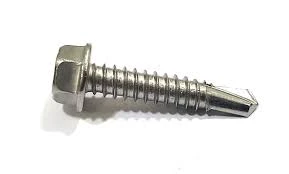stainless steel cross bracing
The Strength and Versatility of Stainless Steel Cross Bracing
In the world of construction and structural engineering, the materials and methods used to ensure the integrity and longevity of structures are of paramount importance. Among the various materials available, stainless steel has emerged as a preferred choice for many applications due to its superior properties. One notable application of stainless steel is in cross bracing, a technique used to enhance the structural stability of buildings and other constructions.
Understanding Cross Bracing
Cross bracing involves the use of diagonal members, typically in the form of Xs, placed in a frame structure. These members are essential for resisting lateral forces, such as those caused by wind or seismic activity. The braces work by distributing the loads across the structure, preventing excessive deformation and ensuring that buildings can withstand external pressures.
Why Stainless Steel?
Stainless steel is an alloy that includes a minimum of 10.5% chromium, which gives it a unique combination of properties. Its most notable characteristic is its inherent resistance to corrosion, which makes it ideal for both indoor and outdoor applications. Unlike traditional steel, which can rust and weaken when exposed to moisture, stainless steel maintains its strength and appearance over time. This durability is particularly beneficial in environments with high humidity or exposure to harsh weather conditions.
In addition to its corrosion resistance, stainless steel also boasts a high strength-to-weight ratio. This means that structures can be built stronger without adding unnecessary weight, which is critical in ensuring efficiency in material use and overall design. Moreover, the aesthetic appeal of stainless steel, with its polished surface and modern look, adds an attractive element to construction projects.
Applications in Structural Engineering
Stainless steel cross bracing is used in various applications, from residential buildings to large commercial structures. In high-rise buildings, cross bracing helps to prevent swaying and enhances stability during high winds or seismic events. The use of stainless steel in these applications adds an additional layer of safety, ensuring that the structure can withstand unexpected forces.
stainless steel cross bracing

Furthermore, stainless steel cross bracing is also used in bridges and other infrastructure projects. The longevity and minimal maintenance requirements of stainless steel are beneficial for reducing long-term costs associated with repairs and replacements. In the context of urban development, utilizing stainless steel for bracing can lead to smarter, more resilient cities.
Environmental Considerations
In an age where sustainability is a crucial facet of the construction industry, stainless steel has an edge. Being 100% recyclable, stainless steel minimizes environmental impact. Structures that incorporate stainless steel cross bracing are not just durable; they also align with green building practices, contributing to a lower carbon footprint.
Innovations and Future Trends
As technology advances, the applications of stainless steel cross bracing are expanding. Innovations in design software and manufacturing processes allow for custom solutions tailored to specific structural challenges. Additionally, the integration of stainless steel with other materials, such as wood or composites, is becoming more common, creating hybrid solutions that leverage the strengths of each material.
Moreover, ongoing research into the properties of stainless steel is likely to lead to the development of even more advanced alloys, enhancing its strength and durability. As engineers and architects continue to explore the possibilities of cross bracing systems, the role of stainless steel in creating robust structures is only set to increase.
Conclusion
In conclusion, stainless steel cross bracing stands out as a critical technique in modern structural engineering. Its advantages—corrosion resistance, strength, aesthetic appeal, and recyclability—make it a go-to option for a variety of constructions. As the industry continues to evolve, the use of stainless steel in cross bracing will play a vital role in building safer, more sustainable structures that can withstand the tests of time and nature. For builders and architects, embracing this material not only enhances the integrity of their designs but also contributes to a more resilient future.
-
Weatherproof Plastic Expansion Anchors for OutdoorNewsJun.06,2025
-
Sustainability in the Supply Chain: Eco-Friendly TEK Screws ProductionNewsJun.06,2025
-
Load-Bearing Capacity of External Insulation FixingsNewsJun.06,2025
-
Double Head Bolts: Enhancing Efficiency in Industrial MachineryNewsJun.06,2025
-
Corrosion Resistance in Chipboard Screws: Coatings for Wholesale DurabilityNewsJun.06,2025
-
Butterfly Toggle Bolts : Enhancing Structural ResilienceNewsJun.06,2025
